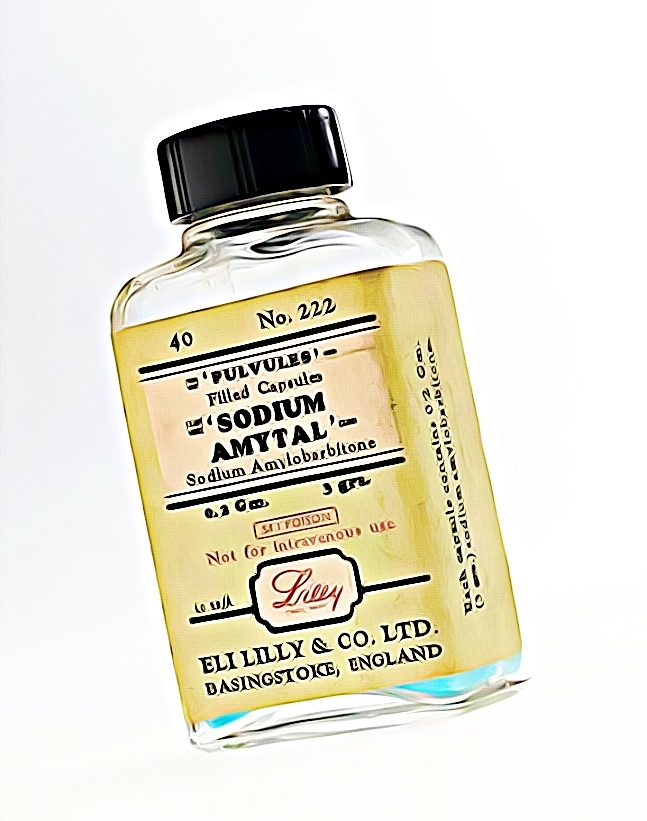While sleep isn’t a luxury, it certainly feels like one nowadays. With all the city’s hustle and bustle combined with technology and many distractions, it can be challenging to get a good night’s sleep. Many different pharmaceutical drugs exist to treat insomnia in people, whether through sedative effects or offering relaxation properties. In fact, some people even self-medicate their inability to sleep, which causes addiction in many people who consume the wrong substances.
Amytal Sodium is an injectable that helps those who have insomnia achieve sleepiness. Short for amobarbital sodium, this is a highly addictive substance from barbiturates, heavily controlled by the United States Drug Enforcement Agency (DEA). Amobarbital is, in fact, a Schedule II controlled substance, meaning that its abuse is illegal because of its life-threatening properties.
Sodium Amytal
As mentioned above, Sodium Amytal is a barbiturate used to sedate patients and people who suffer from insomnia disorders. Since sleep can be challenging to achieve for some people, these are typically injected into the affected individual and cause a sedative effect on the brain. These substances are often known as sedative-hypnotics, so they are potentially deadly when abused. Lower doses can help treat anxiety disorders, while higher doses can cause the hypnotic properties that make people fall asleep.
This substance is classified as a Schedule II controlled drug because of its long list of potential side effects. Users’ primary side effects from the medication are sleepiness because of its sedative properties. However, some may experience heightened anxieties, headaches, body pains, nausea and vomiting, bowel movement issues, feverish symptoms, and intense agitation. More severe side effects include fainting, hallucinations, paranoia, slowed heart rates, and difficulties breathing. These symptoms should be treated immediately by bringing the affected patient to the emergency room, as some reactions can be fatal.
Amobarbital
Amobarbital is a barbiturate that suppresses the central nervous system. Since some people have excessively stimulated nervous systems that reduce their ability to fall asleep, they need to calm their nerves and rest. All kinds of barbiturates are heavily regulated and controlled by the Federal Controlled Substances Act, which the DEA enforces. Initially, they were meant to treat anxiety disorders and assist those who experience seizures. Many people who had mood disorders and general anxiety disorders benefited from the sedative effects that calmed the brain.
The drug allows people to feel sleepiness and is a short-term solution for insomnia because its effectiveness drops off after two weeks of regular use. The only way to keep receiving the effects is to increase the number of dosages and their frequency. Using more barbiturates can cause addiction in people, requiring addiction treatment to remove the drug from their system. Rehabilitation centers typically try to work with patients who heavily abuse amobarbital by helping them fall asleep by switching these drugs with less-potent medications.

What Is a Barbiturate?
Barbiturates are sedative drugs that treat various health issues. Anxiety disorders are the most common, while seizures, intense migraines, and insomnia are other issues that this highly-addictive substance treats. They were highly popular among young users and older individuals back in the 1960s and 1970s, used as recreational drugs instead of treatment methods.
It pays to note that prescribed barbiturates that are taken as recommended by a physician are not harmful to a person’s health. What will damage a person’s life and develop an addiction is mixing these substances with other drugs or alcohol, as these may cause fatalities and health complications. They are commonly known as the date rape drug because of how effective they are at putting a person to sleep.
Nowadays, you’ll rarely see barbiturates prescribed, as benzodiazepines were developed as a less-addictive and safer alternative. Since they carry fewer destructive properties, there are reduced risks of overdosing on them, yet they give similar sedative effects. These drugs are known as downers, and people commonly know them by various street names. Barbs, Reds, Red Birds, Yellow Jackets, Christmas Trees, Blues, Blockbusters, and Goof Balls are the common names you might hear when people talk about barbiturates.
Barbiturate Drugs
Barbiturates come in various types, such as amobarbital, butabarbital, pentobarbital, secobarbital, belladonna, butalbital, and other types. Their more familiar names are Amytal, Butisol, Nembutal, Seconal, Donnatal, Esgic, Fioricet, Fiorinal Ascomp, and Fortabs. These names are examples of various barbiturates found on the US market, so ensure that you keep an eye out for these, as they can develop addictions.
Barbiturate Overdose
Overdosing on barbiturates will come with initial side effects that increase in potency. Initial side effects might be slight dizziness accompanied by lightheadedness, increased sedation, headaches, vomiting, and chest pains. If these aren’t addressed promptly, they can turn into slowed breathing, reduced heart rates, and other adverse effects.
These drugs are heavily regulated because of the risks of fatalities when abused. Prolonged use of substances this powerful may develop tolerances, which will require higher doses of the drug to work properly. Overdose is typical and frequent with those addicted to barbiturates, as these can cause sedation that can stop the heart and cause cardiac arrest. As many drugs are dangerous, barbiturates are nothing different due to their highly-potent chemical nature.
Withdrawals felt by not indulging in barbiturates might make people feel extreme discomfort, which will cause them to take more of the substance to achieve the desired effect. Some people might even mix it with alcohol and drugs such as heroin and other opiates, which may overload a person’s system and cause fatalities or health complications.
These drugs may be even more dangerous for those who have kidney diseases or respiratory issues and can even cause pregnant women to give birth to addicted infants. People who are about to overdose on this substance will experience breathing difficulties, cold sweats, dilated pupils, irregular heartbeats, followed by respiratory failure or a state of comatose.
Barbiturate Withdrawal
Like any addictive substance works, barbiturate dependence can cause severe withdrawal symptoms when a user abuses the drug too much. Withdrawal happens when there is an abrupt cut-off of consumption, which is why rehabilitation centers run detox programs to help with addiction treatment for a safe recovery. The symptoms can be life-threatening and lead to fatalities. In minor instances, people might experience agitation, body pains, increased anxieties, nausea, and shakiness. However, different experiences can be as severe as hallucinations, delusions, paranoia, aggression, and even seizures.
The withdrawal timeline of barbiturate withdrawals can depend on various factors. Like other drugs, barbiturates will have different effects that tie into age, health, length of use, and the amount that has been used in the past few weeks. More intense sensations are generally felt in the first 72 hours of a person’s inability to take barbiturates. Some variants of the drug can peak in two to four days and last up to a week, while longer-acting types can last up to two weeks. Discomforts felt during the withdrawal period are severe and can lead to rash actions and even fatalities because of the body’s adverse reaction to adjusting without the drug’s presence.
Conclusion
Schedule II controlled substances are hard drugs to develop an addiction because their chemicals damage a person’s mind and body. Amytal Sodium is a standard treatment method for insomnia, but this is only to be used for a short-term period to prevent developing a tolerance. If you’re getting dependent on various pharmaceuticals like this, it is best to seek addiction treatment from your local rehabilitation center.

